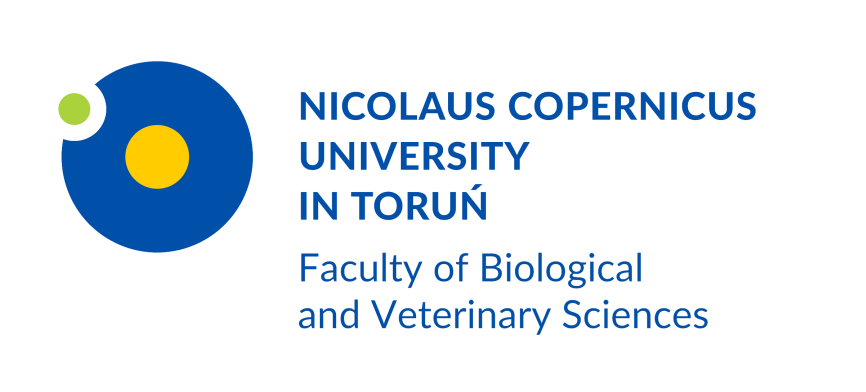Department of Animal Physiology and Neurobiology
Department of Animal Physiology specializes in research concerning the essentials of various biological processes in a living animals. We seek the answers for still up-to-date questions about the interactions between animals and environment and about mechanisms of adaptive changes of physiological functions. Study and research work is conducted both on vertebrates, as well as on invertebrates: laboratory rats and mice, Djungarian hamsters, snails, honey bees and cockroaches. We use both standard and up-to-date research methods and techniques, such as: telemetry, spectrophotometry, respirometry, immunocytochemistry, PCR, HPLC, immunoenzymatic tests, biochemical and behavioural tests.
Our academic stuff conduct research concerning:
- adaptive mechanisms in land snails (antioxidants, cryoprotection)
- insects physiology, ecophysiology and ethology
- integrative physiology, especially concerning cooperation between thermoregulation system and other regulatory systems (defense against anoxia)
- animal stress and neuroplasticity (neurotrophic factors)
- thermoregulation of small mammals and chronobiology (rhythmicity of physiological processes: body temperature, animals activity)
- ecological physiology and behavior of small mammals (animal personality)
- role of TRP receptors in perception of ambient temperatures in insects
- toxicity of pesticides and factors that modify toxicity
Research interest
Head of the Department
Justyna Rogalska, Professor
- Neurodegenerative diseases – the encouragement of endogenous mechanisms influencing the extent of brain damage.
The chronicity of neurodegenerative diseases allows the brain to engage compensatory mechanisms to prevent neuronal damage. Enhancing e.g. antioxidant defence or neuronal plasticity might help the remaining neural circuits to compensate for lost or broken circuits and improve overall network performance and neurological function. The identification of these adaptive processes may facilitate the design of novel drugs that mimic the self-protective capacity of the brain or develop/improve the therapies to encourage the adaptive mechanisms (e.g. decrease of body temperature) - Electromagnetic field – risk factor or treatment method
The electromagnetic field (ELF-MF) aroused interest both as the benefit (treatment method) but also because of its negative effects (risk factor for stress-related and neurodegenerative diseases). ELF-MF exposure induces stress reaction adequate to the density of the field (not unambiguously negative or positive). The ELF-MF-induced changes in the organism modify organism’s susceptibility to subsequent stressors, so would determine the risk for diseases. Mechanism of this phenomenon can be based on the process of so called cellular hormesis – the bidirectional activation of intracellular signal pathways: 1) of compensatory nature; which can be the basis of neuroadaptation to further stress factors or 2) leading to disruption of intracellular homeostasis towards the increase of vulnerability to a subsequent damage.
- Biophysics of neuronal membrane – mechanisms of the modification of nervous system function by natural and artificial neurotoxic factors.
- Interactions between neurotoxic substances in the organism.
- Intracellular signaling mechanisms studied using electrophysiological techniques.
Michał Caputa, Professor
- Integrative physiology, interoperability of the thermoregulation system with other regulatory systems in defense against anoxia and infections; mechanisms of defense against brain overheating; winter torpor in invertebrates
Małgorzata Jefimow, PhD, Associate Professor
- Animal personality, temperature regulation in small heterothermic mammals (rodents, bats) and birds, nonshivering thermogenesis, heterothermy, behaviour, phenotypic flexibility, chronobiology
Anna Nowakowska, PhD, Assistant Professor
- Adaptive mechanisms during winter torpor, estivation in ectothermic animals in the context of oxidative stress defense. HSP proteins in the control of activity/torpor cycle in land snails. Cryoprotection in selected species of animals. Land snails as bioindicators of environmental pollution.
- Physiology, ecophysiology and ethology of insects; electrophysiology of the honeybee Apis mellifera flight muscle, thermoregulatory behaviour of insects (honeybee Apis mellifera, American cockroach Periplaneta americana, blowflies Calliphora vomitoria and Protophormia terraenovae and mealworm Tenebrio molitor). Ongoing research concerns exogenous and endogenous factors that modify thermoregulatory behaviour of insects, the relationship between social and thermoregulatory behaviour of bees, the effect of photoperiod and olfactory stimuli on thermal preferences; the effect of lightening on thermal preferences of individuals and small groups of blowflies.
- The effect of plant protection products (PPP) on the honeybees and their transfer from crops to the honeybee hives, distribution of PPP active ingredients inside the hive. The search for the attractant used in traps for slugs.
- The influence of body temperature during perinatal hypoxia on the level of neurotrophic-derived factor (BDNF) and the spatial memory in rats.
- TRP channels in insects thermoreception, effect of alkaloids and natural toxins on cockroach behavioral thermoregulation, natural factors that modify pesticides toxicity, toxic substances in food.
- The electromagnetic field exposure effects on human health and the environment.
- Using electrophysiological techniques in bioelectromagnetic study.
- Electromagnetism in medicine and biology.
- Medical physics
- Bioelectrical activity in insect excicatory cells
- Mechanism of action of neurotoxic substances (natural and synthetic) in insect nervous system
- Interaction between neurotoxic substances
- Action of stressogenic factors on signaling pathways in nervous system: insects and mammals
- Impact of electromagnetic field on animals behavior and nervous system functions
- Molecular dynamics studies of allosteric conformational changes of medically important proteins in response to xenobiotics binding.
- Neurotoxic ligands interactions with membrane proteins.
- The role of muscarinic acetylcholine receptors in the development of neurodegenerative diseases.
- Molecular mechanisms of insect resistance to insecticides.

 ul. Lwowska 1, 87-100 Toruń
ul. Lwowska 1, 87-100 Toruń